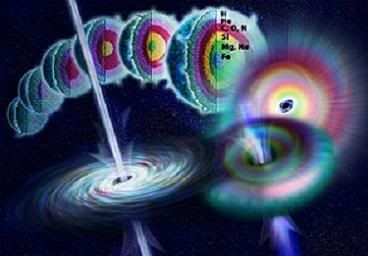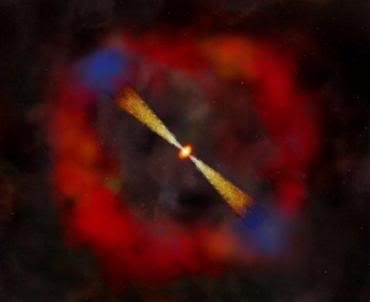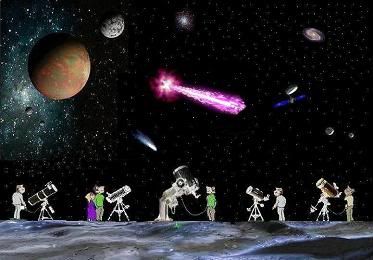Post by glactus on Sept 10, 2011 2:15:43 GMT

The life cycle of a massive stat & Gamma ray burst
Artist's illustration showing the life of a massive star as nuclear fusion converts lighter elements into heavier ones. When fusion no longer generates enough pressure to counteract gravity, the star rapidly collapses to form a black hole. Theoretically, energy may be released during the collapse along the axis of rotation to form a gamma-ray burst.

A Gamma ray burst
Gamma-ray bursts (GRBs) are flashes of gamma rays associated with extremely energetic explosions that have been observed in distant galaxies. They are the most luminous electromagnetic events known to occur in the universe. Bursts can last from ten milliseconds to several minutes, although a typical burst lasts 20–40 seconds. The initial burst is usually followed by a longer-lived "afterglow" emitted at longer wavelengths (X-ray, ultraviolet, optical, infrared, micro and radio).

Looking at a Gamma ray burst
Most observed GRBs are believed to consist of a narrow beam of intense radiation released during a supernova event, as a rapidly rotating, high-mass star collapses to form a neutron star, quark star, or black hole. A subclass of GRBs (the "short" bursts) appear to originate from a different process, possibly the merger of binary neutron stars.
The sources of most GRBs are billions of light years away from Earth, implying that the explosions are both extremely energetic (a typical burst releases as much energy in a few seconds as the Sun will in its entire 10-billion-year lifetime) and extremely rare (a few per galaxy per million years). All observed GRBs have originated from outside the Milky Way galaxy, although a related class of phenomena, soft gamma repeater flares, are associated with magnetars within the Milky Way. It has been hypothesized that a gamma-ray burst in the Milky Way, pointing directly towards the Earth, could cause a mass extinction event.
To see video of a Gamma ray burst just click on the link below. has sound
science.discovery.com/videos/sci-fi-science-gamma-ray-burster.html
Credits: These are non copywrite images
Text by wWikipedia
Space art by Glactus


